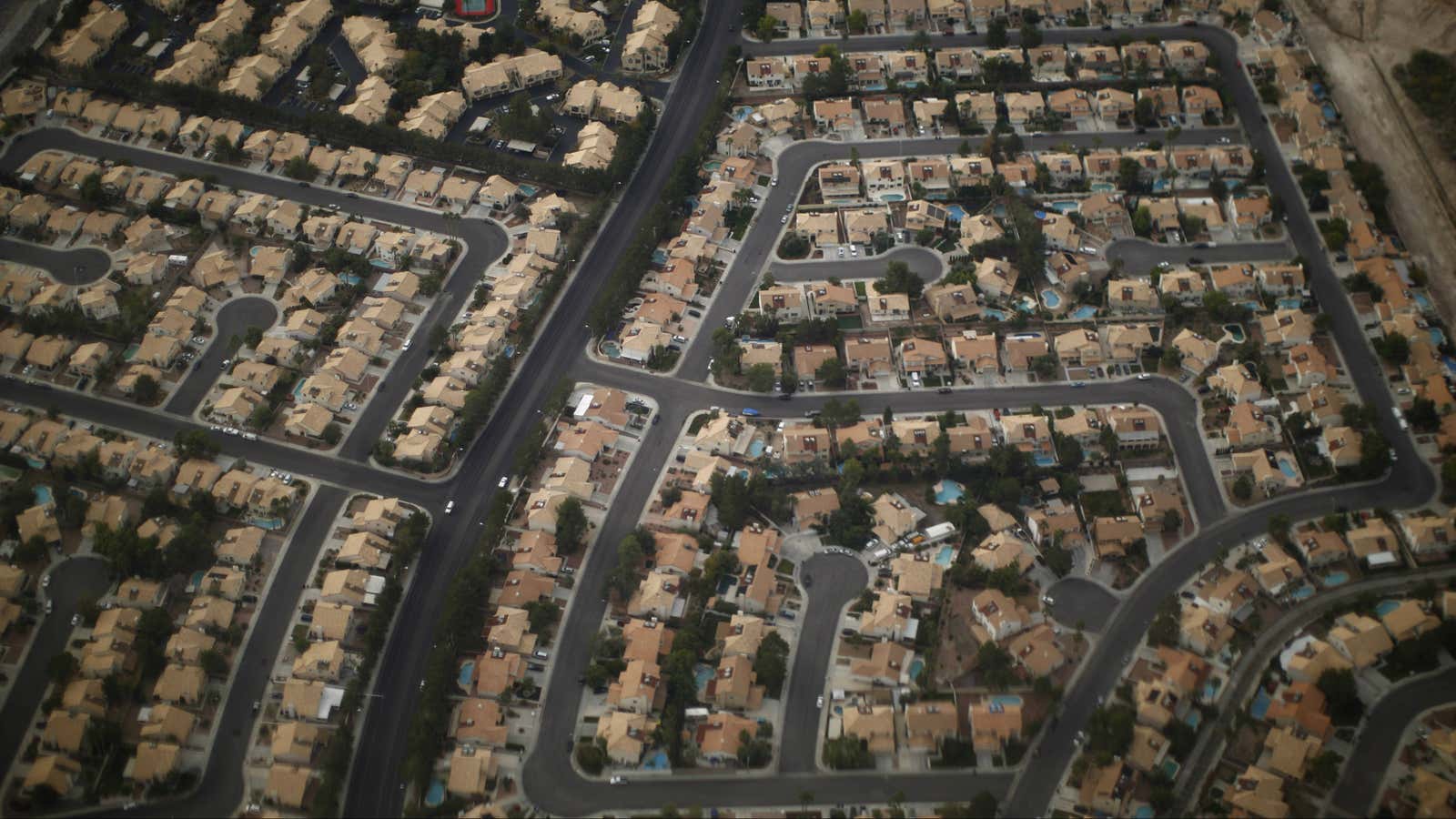In his inaugural address, US president Donald Trump listed out the problems he saw in a declining America. At the top of his list: “Mothers and children trapped in poverty in our inner cities.” It was not the first time Trump had spoken of urban poverty. “Our inner cities are a disaster,” Trump said in the third presidential debate of 2016. “You get shot walking to the store. They have no education. They have no jobs.”
In addition to their racist undertones, Trump’s statements promote a dangerous misrepresentation of the geography of poverty in the United States.
Over the last several decades, US poverty has increasingly spread to the suburbs. In 1990, the majority of poverty in the 100 largest US metro areas was found in urban areas. But recent research by the political scientist Scott Allard shows that, in absolute numbers, this no longer holds true. The University of Washington professor estimates that there are 17 million people living in poverty in the suburbs of the US’s big cities—4 million more than in cities themselves.
Part of the rise comes down to the fact that the suburbs are generally growing faster than cities, but it’s not just that. From 1990 to 2012, the poverty rate in large metro areas grew by 43% in suburbs, compared to 17% in urban areas—though it is worth noting that urban poverty rates, at 21%, are still nearly double the 11% suburban rate.
In Allard’s new book, Places in Need: The Changing Geography of Poverty, he explains the rise of suburban poverty as, primarily, the result of a worsening suburban labor market. Families that moved out to the suburbs in the 1970s to 1990s, attracted by well paying, low-skilled jobs in manufacturing, have seen those jobs disappear. The unemployment rate in the typical suburban tract (government-created subdivisions of around 3,000 to 5,000 people) are nearing that of the typical urban tract, and the post-recession job recovery has been weakest in suburban areas that were already poor.
Allard finds that the rise in suburban poverty is not strongly tied to the changing ethnic and racial demographics of American suburbs. Suburban poverty trends among white, black, and Hispanic populations have grown similarly since 1990. Contrary to one popular narrative, Allard also doesn’t find that lower-income families being pushed out of cities due to gentrification is a major cause of suburban poverty’s rise.
The move of poverty to the suburbs is a challenge for the American social-safety net. Many anti-poverty programs in the US were designed to address urban issues—and nongovernmental organizations supporting the suburban poor are comparatively rare and underfunded. Allard finds that federal programs, such as the Supplemental Nutrition Assistance Program (where “food stamps” come from) and the Earned Income Tax Credit, are designed in such a way that benefits have quickly flowed to the suburban poor, but the benefits of locally controlled programs, like Temporary Assistance for Needy Families, have been slow to reach the suburbs.
Allard believes that the challenge of addressing suburban poverty is exacerbated by the fact that the scope of the problem is so often portrayed—by Trump and others—as being limited to the urban poor. He found that, in 2010, there were about eight times as many articles in major US newspapers containing the words “urban” and “poverty” than “suburban” and “poverty,” and that this media coverage is disproportionately focused on black Americans. He cites a wide range of research that suggests support for social-assistance programs declines when Americans believe that poverty is mostly found in urban, minority settings.
Poverty in America is no longer an urban phenomenon, and it’s time we stopped talking about it as though it is.
